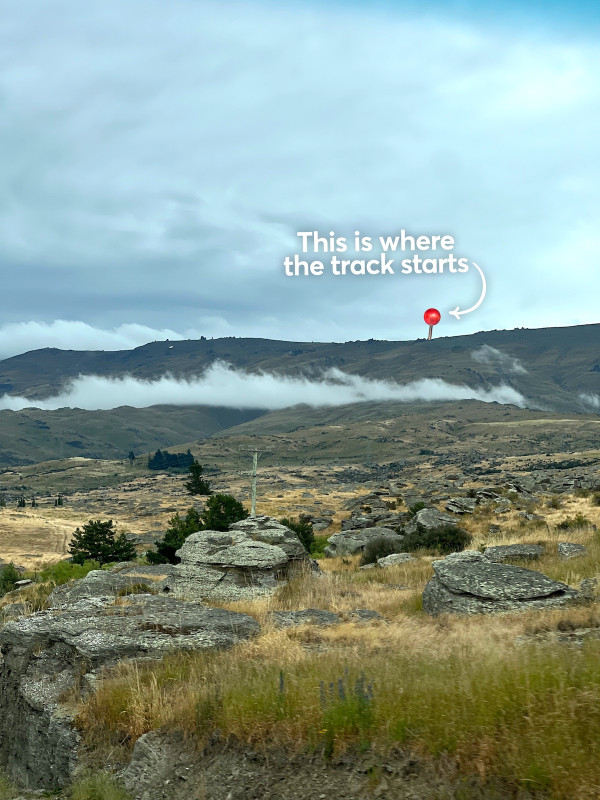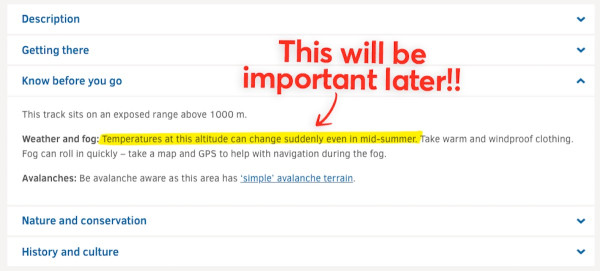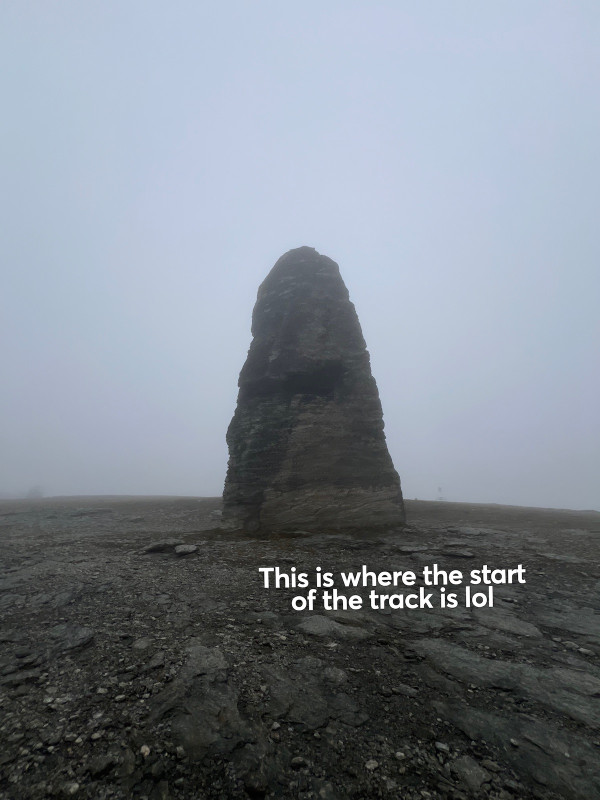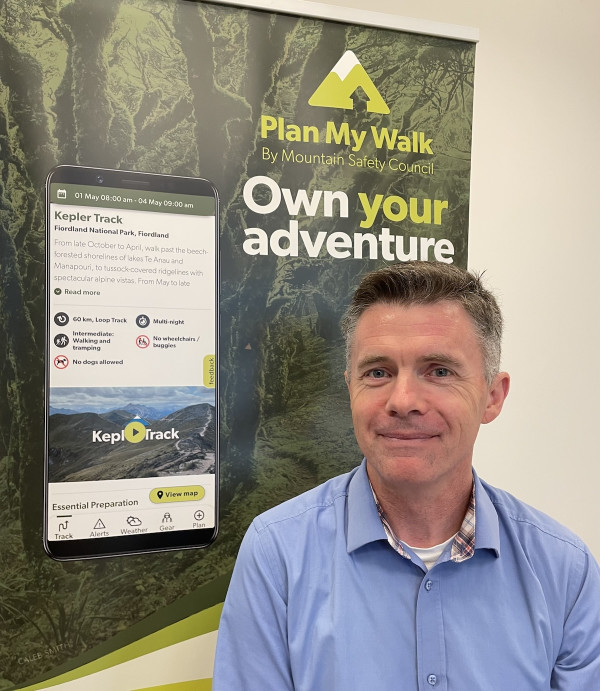Over the summer break, my dad and I decided to do a simple day walk. But what we discovered on arrival ALMOST KILLED US!
Okay okay, I’m exaggerating a lil. I was nowhere close to dying 🤡
But there was an incident that made me realise how badly mother nature can fuck you up if you’re ill-prepared.
Here’s what happened:
It was a few days after Christmas and my dad and I decided on a day walk we wanted to do – the Obelisk Loop Track, a 3hr 30min return walk that runs along the ridge of a mountain near Alexandra in Central Otago.
You have to drive 45min up the mountain along a 4WD road to get to the start of the track.

A view of the Obelisk Track, from very far away. Image: Re: News
The forecast for the day was a high of 30°C.
If you’ve been to Central Otago in the peak of summer, you know how unbearably hot the days can get – for this reason, we decided to get up early so we weren’t walking in the heat of the day (we thought we were being real smart here lol).
When we woke up, it was overcast but warm, so we both wore shorts and a t-shirt.
Just before we headed out the door, we noticed the Department of Conservation website said the track can get cold even in the height of summer (foreshadowing), so we packed a merino each.

It turns out this was a key piece of information. Image: Screenshot of the DOC website / Re: News.
To get to the start of the track, you have to open and close a few gates along the 4WD road.
Each time I got out of the car to open a gate, I noticed it getting colder and colder 🤔
It’s really hard to convey through words how cold it was once we reached the start of the track, but I’m going to try: it was really fucking cold.
And because we were in a cloud, we could hardly see 10 metres in front of us.

Look at all the fog 😶🌫️. Image: Re: News
According to the Swiss Federal Office of Meteorology and Climatology, with every 100 metres of elevation, the temperature drops by an average of 0.65°C.
To get to the start of the track, we gained 1,532m in altitude, which means the temperature dropped by roughly 10°C.
This tells me that the temperature at the top of the mountain was approximately 5°C.
But it was the wind chill and moisture in the air that made things really cold.
Emergency doctor and national medical director of Surf Life Saving New Zealand, Dr Gary Payinda, says that the fact I was inside a cloud suggests there was a high water content in the air.
“The really concerning thing is when one gets wet, either from sweat or from rain, your ability to lose heat goes through the roof,” says Gary.
In fact, water conducts heat away from your body 25 times faster than air.

National medical director of Surf Life Saving New Zealand, Dr Gary Payinda. Image: Supplied
Safe to say, our single-layer merinos weren’t going to cut it.
Lucky for us, the decision was simple: get back in the car and go home.
But what would have happened if we were dumb enough to give the track a go?
Gary says it doesn’t take a profoundly cold environment to become hypothermic – a breeze and a little bit of moisture is often all it takes.
“Within 30 minutes, I think you would have been in an unpleasant situation.
“And the really important thing to consider here is when you get mildly hypothermic, you make bad decisions – maybe doing things that aren't safe or taking risks that you shouldn't.
“So the hypothermia might be the least of your worries if you end up getting yourself into a situation you can't get out of.”
So, like I said, I was nowhere close to dying because we got straight back in the car. But had we started walking, we very likely would have become hypothermic, or a lot worse.
Where I went wrong
Turns out, the predicament I found myself in is the same sort of situation that leads to a huge spike of rescue call outs during the summer period.
According to the NZ Mountain Safety Council (NZMSC), situations involving explorers being ill-prepared nearly double during the warmer months.
“Over the summer period, we see people going to places they haven’t gone before, or places they haven't been to for a whole year and the environment has changed,” NZMSC CEO Mike Daisley says.
“Because they aren’t as familiar with the area, it takes twice as long as expected, or it’s twice as steep as they expected, or it’s more beautiful than expected and [they] take a lot more photos – they just don’t know the place and it turns into a much longer day than they had originally thought.”

NZ Mountain Safety Council CEO, Mike Daisley. Image: Supplied
Weather is another factor that often catches people out, Mike says.
“We often see situations where people never would have done the trip if they had checked the weather beforehand.
“They would have seen there was a massive storm front coming through after lunch, for example, and used their better judgement.”
If you want to avoid embarrassing yourself by dying on a simple day walk this summer, the NZMSC has five simple steps for you to follow:
- Choose the right trip for you
Follow the advice of Irish journalist Teresa Mannion, (who went viral in 2015 for a weather live cross) : “Don’t make unnecessary journeys, don’t take risks on treacherous roads.” Don’t try to walk an advanced mountain track when your only mountaineering experience is climbing Maungawhau/Mt Eden. It’s important to only choose trips that are suitable for your fitness level and experience in the outdoors. - Understand the weather
If you’re going to take anything away from this article, let it be that it's colder at the top of the mountain than it is at the bottom of the mountain! Don’t be dumb, check the weather forecast and ask yourself if the conditions are right. The NZMSC has a Plan My Walk app, which can provide you with weather information specific to the track you’re looking at doing. MetService also has weather forecasts for mountains and national parks, with specific information about the weather at certain altitudes of many popular walks. - Pack warm clothes and extra food
If you’ve spent more than 24 hours in Aotearoa, you will know that you can have sunshine, gale force winds and drenching rain all in one day 🥰 No matter what the forecast, pack a waterproof jacket and warm clothes. Extra food is also important, be prepared for an unexpected overnight stay in the wilderness. - Share your plans
If you would rather not die on a simple trip away, NZMSC strongly recommends telling a trusted person exactly where you’re going and when you expect to get back. Turns out it’s quite hard to find a missing person if you have no fucking clue where they are. - Take care of yourself and each other
In the words of the teacher at your year 7 school camp, “you’re only as fast as your slowest walker”. Look out for and be kind to the people you’re travelling with. Stop regularly to eat, drink and rest, and make decisions together.
Mike says listen to your mum!
“It sounds like really simple ma and pa advice, something your mum might have told you, ‘Take a rain jacket, take some extra food’, but it's actually evidence-based, it's not just your mum.”
More stories:
Health students don’t get paid on placement and it sucks
Students on clinical placements are paying bills from an empty bank account.
I spent 18 months surfing porn sites for research, here’s what I learnt
“I found everything from the truly horrific, through to gorgeous, sexy, and fabulous.”
What it’s like running an off-grid bakery on Great Barrier Island
"Everybody knows your business."